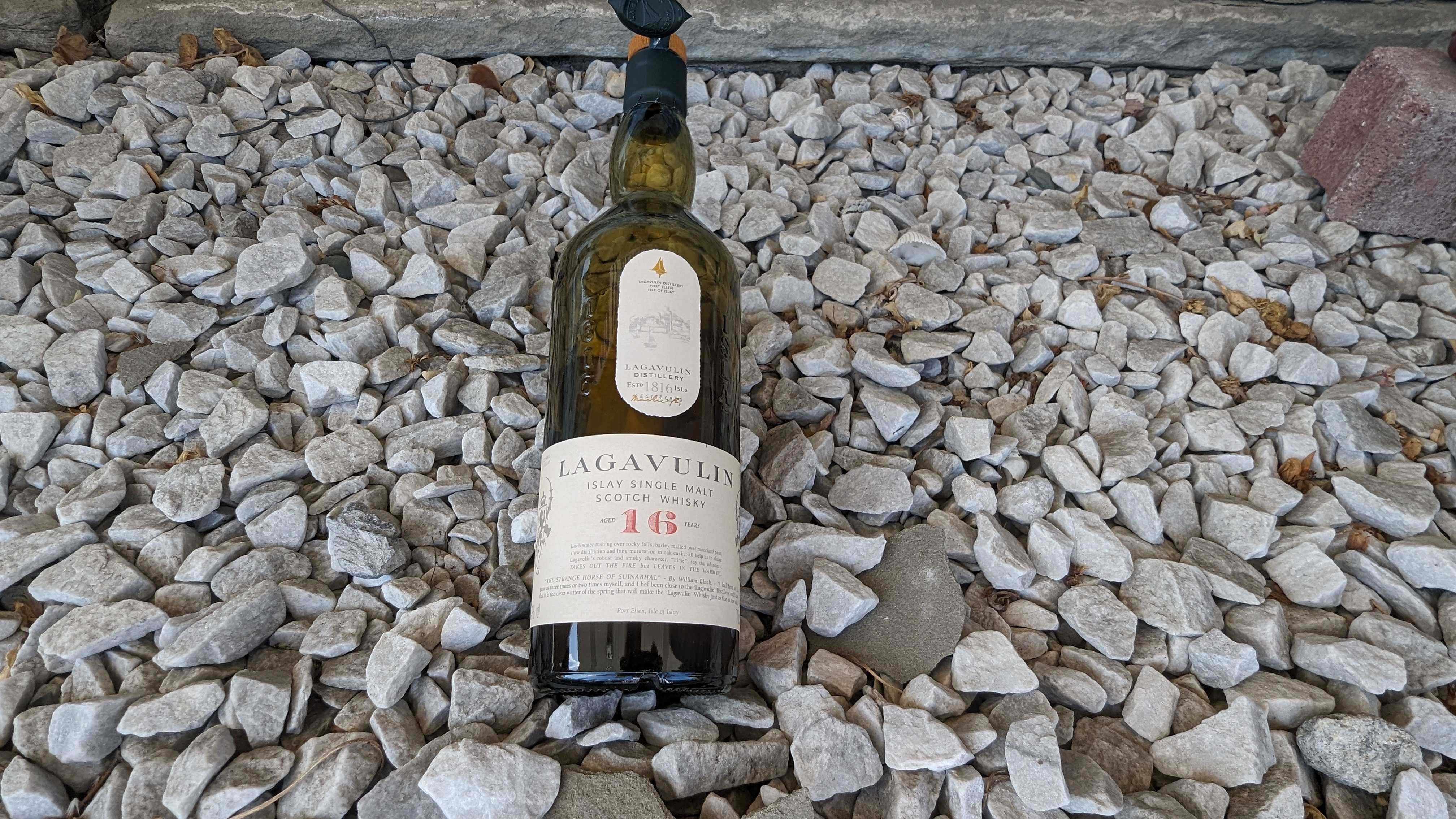
There’s a remarkable amount of variety when it comes to Scotch whisky. You can split it into five broad categories: Highland, Lowland, Speyside, Campbelltown, and Islay, but there’s a lot of overlap and diversity within many of those categories. There are also stalwart examples of each style, and Lagavulin 16 is a great example of an Islay.
If you want to get into the spirit, which is traditionally created off the west coast of Scotland, then Lagavulin 16 is the best place to start. The trouble is, you probably shouldn’t start with an Islay if your scotch adventures are just beginning.
While everyone’s tastebuds are a little different, and some folks will be comfortable hopping right in there — you may be better off starting with a Speyside and working your way toward the more acquired tastes. Lagavulin is distilled at the Lagavulin distillery, which is one of the oldest distillers on Islay. Here’s what you need to know about this traditional tipple.
Lagavulin 16 is remarkably pleasant but far from “entry-level”

Like any good Islay, a whiff of Lagavulin 16 comes with deep, smoky notes paired with that medicinal scent of iodine. It will take a few seconds for your olfactory nerves to wade through that smoke and get into some of Lagavulin’s deeper scents, but persistence may net you a hint of fruity sherry, a touch of vanilla, and some peppery spice.
It’s a similar experience on the palate, the smoke and iodine hits you right away as is often the case with a good southern Islay. For a less experienced drinker, this could well be where the ride stops. However, give it some time on the palate and the smokyness and any initial dryness will give way to a burst of fruity sweetness. That sherry is showing up again. Once the spirit has left your tongue, a lingering spicy finish should remain, along with some fruitiness and a hint of vanilla.
There’s no harshness to Lagavulin, it’s a quality spirit. When you’re into Islays, it’s almost dangerously easy to drink. When you’re ready to delve into some of the more complex scotches, it’s a great starting point. The only issue is, Islay isn’t a style of whisky people tend to start on.
Islay isn’t a traditional starting point

Like most things in life, there aren’t really any set rules. If you want to start drinking Islays like Lagavulin 16 as you’re first getting into scotch, fair play to you. If you want to mix a complex, rare, $400 spirit with a soft drink, you’ll get some funny looks and probably be accused of blasphemy — but again, it’s your money.
However, Islay is a touch medicinal and probably not the place to start if you’re just beginning to drink neat scotch. That smokyness, peaty, and iodine flavor endear people, but it can be very overpowering at the start.
While developing your palate, you’re better off starting with something far milder, like a Speyside, before graduating to highland whiskies. It gives you a chance to relax and think about what’s happening on your palate at a gentle pace. Even if you’re getting used to scotch, your first Islay can be a bit overwhelming. It may take some time to wade through the smoke and get a taste for it.
However, if you pick something like a Lagavulin 16 whisky, things can be a little easier. It’s very well done, you won’t have any sharp alcohol notes turning up to ruin the party. You can just sit back and enjoy the spirit for what it is.
Why is Lagavulin 16 so smoky?

Lagavulin 16, and other whiskies from the western isles, get their distinct flavors from the peat used to dry the barley. Importing coal to dry out the barley after malting would have been prohibitively expensive back in the day, so Islay distilleries used a local resource, peat, instead. By the time importing said coal was cost effective, Islay whiskies were already known for their smoky flavors. Distilleries didn’t want to dump their main selling point, so they stuck to peat.
Not all Islay whiskies are smoky and peaty, and they aren’t the only smoky scotches. Highland whiskies can also use peat in their processes, giving them a hint of smoke. The now-rare Campbelltown scotches also tend to be peated. However, many Islay whiskies are heavily peated, and the smoky, medicinal, flavors that come with the process are more closely associated with Islay than they are any other style of scotch.
Once you’re comfortable with Islays, it may be time to visit Campbelltown — the end-game boss of scotch. They’re hard to track down, and fighting through the famous “wet dog smell” may be difficult, but you can’t complete your whisky journey without sampling all five traditional styles.



